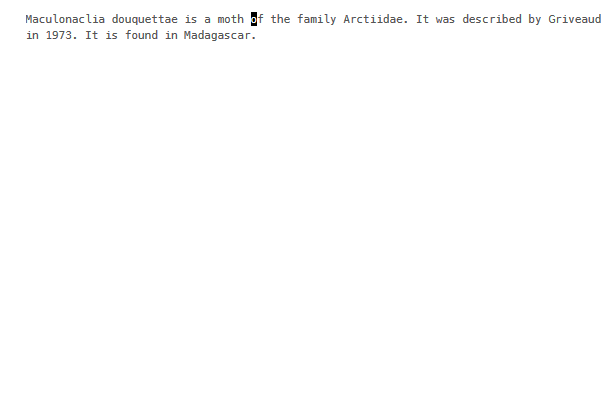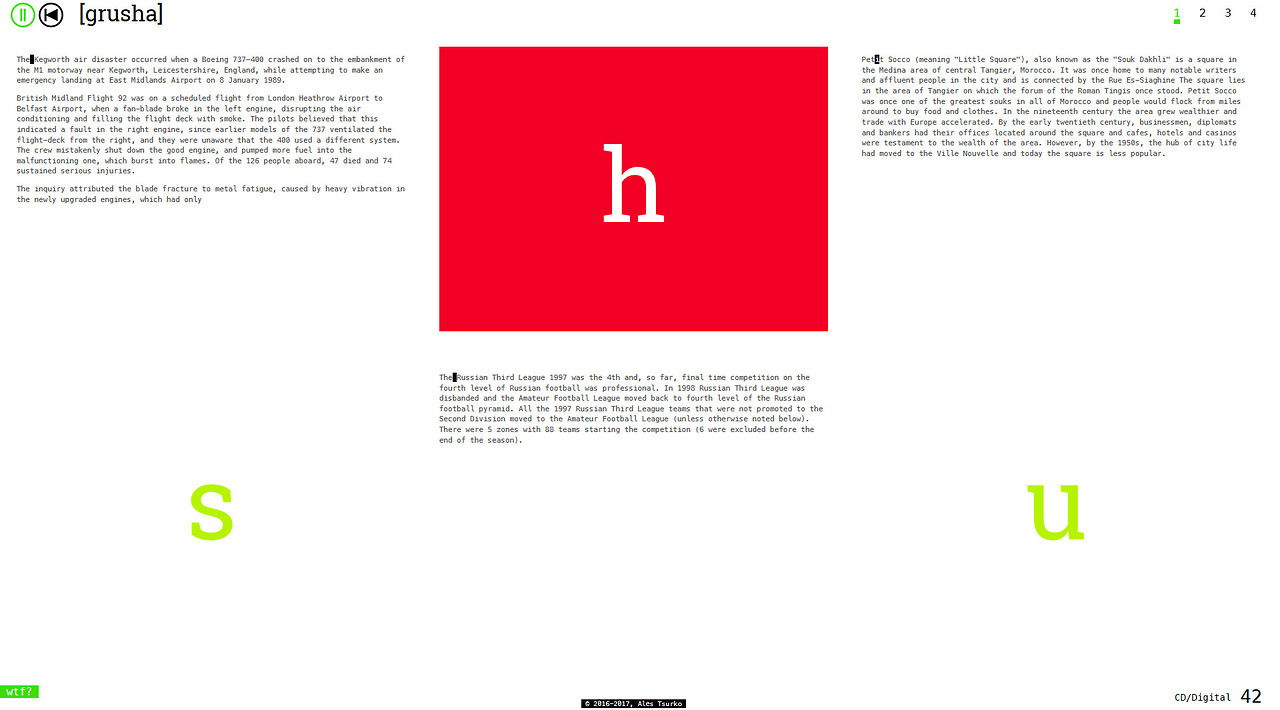



Microscale
I continue to be fascinated by using outside patterns to provide structure to generative processes. This week’s fascinating example of unusual inputs is Microscale, by Ales Tsurko, and it uses Wikipedia to make music.
Notably, rather than a naive 1-to-1 mapping, it treats the articles as step sequencers, switching the steps on and off according to a regular expression (which is also the track title). The artist explains the intent:
The concept behind microscale is to show that through transforming one media (text) into another media (music), the meaning can be transformed – the article has its own meaning, but the music generated from the article has a completely different meaning.
This is, I think, one of the strengths of generativity: presenting familiar things in a new light, showing hidden patterns, and giving us a new way to find meaning in the ordinary.
It’s also flexible: the web version is hackable (for starters, enter your own track title) and the source code is available.
As with most audio projects, you really have to listen to it to get the full effect:
